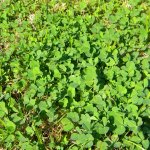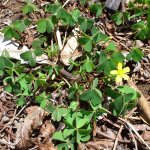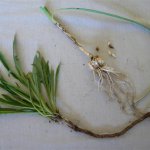Controlling Weeds in Garden Beds
The term 'weed' in a broad sense is used to describe any green herbage that grows where it is not wanted. For our purposes we will concentrate on those persistent grasses and small plants that come up in every nook and cranny and open space in the garden. The burning question is how to get rid of them, assuming one doesn't want to make use of poisons. Because weeds produce many thousands of seeds per plant, per season, this is a long term issue but one that can be almost entirely conquered over time. Like most gardeners, I view weeding as a torture to be endured when I would much rather be doing something, anything else.
For four years my attacks on the weed population in my garden appeared to have had no effect at all but slowly, bit by bit, there seems to be hope for the future. I put this down to three rules I follow although I know that if I let up my quard for just a couple of months, I'll be back where I started.
The First Law of Weeding: Never allow a weed to set seed
When faced with too many weeds to deal with, be selective. Eradicate those with seed heads first. If you are swamped with weeds simply scythe or slash the heads off the plants and rake them together. Burn or otherwise remove these plants from your property and don't be tempted to put all that good, green stuff into your compost heap. Most home compost heaps do not reach a high enough temperature to destroy the seeds and they can lie dormant for many years. If the ground is moist and yielding, simply hand pull the weeds. For soils that are either too dry or too dense to allow for successful root removal by hand pulling, use a garden fork to loosen the roots of broad-leaf weeds, and a narrow, long-handled tool that can get down to the tap roots of perennial weeds.
The second Law of Weeding: Get the roots out
Many of these little plants cling to life with alarming tenacity and the whole root must be removed or they will simply come up again after a few days. Use a narrow trowel, a small garden fork, or any one of the wide variety of weed removers available on the market, and remove the whole root from the ground. Most plants we call weeds are plants from the fields and meadows, where for millennia they have been grazed to the ground by wandering herds. They have enormous recuperative abilities. The majority of weeds that are cut off at ground level will re-grow with multiple heads and stronger roots. Dug out properly, you may never have to dig the bed again if you then follow-up with.....
The Third Law of Weeding: Mulch
As soon as an area has been well weeded, cover the ground with 8 - 10 centimetres of mulch (not grass cuttings). A few intrepid weeds will still show their colours through the mulch, but on the whole the problem is drastically reduced. Remember that mulch disintegrates with time and subsequent layers will be needed to deter weeds.
This process should be sufficient for small and medium-sized gardens, but for very large gardens it remains a bit of a problem. To overcome this, I have made friends with many plants I originally tried to eradicate. Little annual wild flowers now come up at will in all sorts of places, so that the garden always has little spots of colour. When they become untidy after flowering, it's quite easy to pull them out.
Use herbicides only if you have no other option
There are some weeds that do not respond to any form of removal and then it may be excusable to use the "kiss of death" - a sponge soaked in a weed poison that causes the roots to rot, is wiped onto the leaves of the weed. Wear plastic gloves and be careful not to drip poison on anything else. Weeds that need to be treated this way are those with very long or brittle tap roots which break under the ground and re-grow tougher and stronger, and bulbous plants that shed bulb-lets under the ground every time you remove the mother plants from the ground. In its own category is the problem of wild or lawn grasses coming up in beds. There is only one working solution, other than poison. Dig it out. Dig deep, follow the roots under the ground with your hands and trace them to their source. If there are plants in the way, take them out and set them aside or plant them in a temporary position until their bed has been made habitable again. Use the opportunity to add some compost and refresh the bed, before replacing the plants. You will probably still have a few shoots growing again from tiny pieces of root that you've missed. If they are shallow, dig them out. If they appear to be rooted to the center of the earth, break them off as deeply as you can or give them the kiss of death.
Use weeds to your advantage
There is no such thing as a weed free garden, and all the more so if you are avoiding the use of herbicides, but weeds are controllable. As you repeat the process as the seasons pass, you will have fewer and fewer weeds to control. There are other positive spin-offs as well. Plants thrive on your presence and will respond to your attention as you work amongst them. You are more likely to spot insect pests or diseases at an early stage. You can take your frustration or anger out on weeds, use the time to think things through and gain perspective, or just put your mind into neutral and let it rest. Many problems can be solved that way. You also get a gentle, or even brisk physical workout, depending on your mood.
Weeding can make you emotionally and physically healthier - use it as a tool.







Add new comment